Homeowner’s Guide to The Most Popular Wood Fences in PA
As The Fence Guys, we know choosing a fence for your Greater Philadelphia home is a big decision. Follow this guide detailing your options by focusing on the most popular wood styles and the key factors homeowners in Montgomeryville and Bucks County consider.
Your Key Wood Fencing Decision Factors
Explore the five most common factors PA homeowners use to narrow down their fence choices.
Privacy & Security Needs
Your first step in choosing a fence is determining its primary function. Are you looking for total seclusion, or simply a defined property boundary?
Total Privacy: If you need maximum visual blockage for a pool, a high-density neighborhood, or an intensely private backyard, you need a full privacy fence.
Semi-Privacy: These fences allow some light and air to pass through while still discouraging casual viewing. They are often called “good neighbor” fences because they look finished on both sides.
Defining Boundaries: If your goal is primarily to mark your property line, contain large animals, or add curb appeal without blocking the view, an open fence is ideal.
Budget & Initial Investment
Wood fencing costs vary dramatically based on the material used and the complexity of the style. Knowing your price range upfront will eliminate several options immediately.
Most Economical: Styles that require the least amount of material and have the simplest installation methods will save you money. Using Pressure-Treated Pine as the material is the single biggest factor in reducing initial cost.
Economic Fence Styles:
- Split Rail (lowest material cost per linear foot)
- Stockade (lowest cost for full privacy).
Mid-Range: These styles balance aesthetics and function with reasonable material use, often prioritizing the “good neighbor” look or specific dimensional stability.
Mid-Range Fence Styles:
- Shadow Box and simple Spaced Picket (especially if using mid-grade PT Pine).
Premium: Styles that use maximum material and require precision construction will cost more, but they provide the highest level of finished look and longevity.
Premium Fence Styles:
- Board-on-Board (uses up to twice the wood of Stockade)
- Horizontal designs (requires high-quality lumber and complex framing)
Durability & Maintenance Commitment
The long-term success of your wood fence in Pennsylvania depends on how well the material handles weather cycles and how much effort you’re willing to put into maintaining your fence. Our installation experts prioritize climate-specific durability with wood fences.
The two most popular wood materials for fencing in PA are Pressure-Treated Pine and Western Red Cedar. Your final decision will rest on how they handle our unique climate, with heavy precipitation and intense freeze-thaw cycles in winter.
Suitability For Pennsylvania’s Climate
PA’s climate brings humid summers, heavy precipitation, and intense freeze-thaw cycles in winter, all of which are challenging for wood. Your fence must be able to withstand constant changes in moisture and temperature. Learn about the pros and cons of fencing materials in PA’s climate.
Moisture Management: Choose styles that allow air to circulate. Full privacy fences must be managed carefully to avoid trapping moisture, which speeds up rot.
- Styles with Good Airflow: Shadow Box and Spaced Picket dry out quickly after rain or snow.
Ground Contact: The Fence Guys’ Non-Negotiable Standard ensures all posts must be properly set below the frost line and treated. As certified PA installers, we consider this non-negotiable to prevent frost heave (where the ground lifts the post out of the earth).
- Material Tip: Even if you choose Cedar panels, always use Pressure-Treated Pine or concrete footings for posts for the best resilience against ground moisture and frost.
Wood Movement: The most common failure is warping due to temperature swings. Cedar is fundamentally better at resisting this movement than Pine.
Explore Popular PA Wood Fence Styles
Board-On-Board
The Board-on-Board fence is the ultimate choice for total privacy and security. Our expert installation ensures this style is constructed with vertical pickets that slightly overlap each other. As wood naturally expands and contracts with Pennsylvania’s seasonal weather changes, the overlap ensures there are never any visible gaps, maintaining 100% visual seclusion.
Why it’s Popular in PA: Provides maximum privacy for backyards, pools, and properties bordering busy areas. It also offers excellent noise reduction and a robust, high-end finished look.
Best Use Cases: Pool enclosures, shared property lines where absolute privacy is paramount, or any area where noise reduction and total seclusion are desired.
Materials: Often chosen in Western Red Cedar for its superior dimensional stability, but can also be built with Pressure-Treated Pine for a more budget-friendly option.
Spaced Picket
The Spaced Picket fence is the quintessential “American dream” fence, famous for its charming and inviting appearance. This style features vertical pickets with intentional gaps between them, allowing for clear visibility through the fence. It’s typically shorter, serving more as a decorative boundary than a security barrier.
Why it’s Popular in PA: Picket fences enhance curb appeal, especially for Colonial and Traditional homes common in the greater Philadelphia area. It adheres to local zoning codes in front yards that often restrict fence height and opacity.
Best Use Cases: Front yard boundaries, garden enclosures, decorative accents, or containing small pets in an open setting.
Materials: Most commonly built with Western Red Cedar for its classic look and natural resistance, or Pressure-Treated Pine for a more budget-conscious option. Often painted white for that iconic aesthetic.
Shadow Box
The Shadow Box fence is a highly popular choice in suburban communities across Montgomery County and the greater Philadelphia area, earning its nickname as the “Good Neighbor” fence. The Fence Guys recommend this style because the alternating picket pattern promotes critical airflow, helping the wood dry faster in our humid climate.
Why it’s Popular in PA: A great balance of privacy and aesthetics, looking equally appealing from both sides. The alternating picket pattern also promotes airflow, which helps the wood dry faster in our humid climate.
Best Use Cases: Shared property lines between neighbors, backyards where some privacy is desired without total enclosure, or areas that benefit from increased air circulation.
Materials: Commonly constructed with either Pressure-Treated Pine for affordability or Western Red Cedar for enhanced durability and aesthetic appeal.
Split Rail / Slip Board
The Split Rail (or Post & Rail) fence evokes a classic, rustic charm deeply connected to Pennsylvania’s rural heritage. They’re made of sturdy horizontal rails that fit into notched vertical posts. It’s designed primarily for demarcation and aesthetic appeal rather than privacy or security. The “Slip Board” variant often uses cleaner, more refined horizontal boards.
Why It’s Popular in PA: Split Rail and Slip Board fences offer a natural, open look that complements larger properties, farmhouses, and expansive yards. It’s also an economical choice for defining wide-open spaces. Adding wire mesh to a split rail fence (often called a “farm fence”) is a popular addition for containing pets or livestock.
Best Use Cases: Defining large property boundaries, front yards where open views are desired, containing larger pets (with added mesh), or enhancing the aesthetic of a sprawling landscape.
Materials: Typically made from Pressure-Treated Pine for durability, Cedar for its natural beauty, or even hardy local woods like Locust for ultimate resilience.
Stockade
The Stockade fence is a highly practical and budget-friendly option for achieving full privacy. It consists of vertical pickets placed tightly side-by-side, creating a solid barrier. Often characterized by pointed or dog-eared tops, it provides a classic, straightforward look.
Why It’s Popular in PA: The Fence Guys’ budget stockade fences are the most affordable way to get complete visual privacy and a solid windbreak for your backyard. Its simple construction allows for quicker installation, saving on labor costs.
Best Use Cases: Securing property lines on a budget, enclosing utility areas, or creating a private backyard space where cost-effectiveness is a key driver.
Materials: Almost exclusively built with Pressure-Treated Pine or rough-sawn spruce, as its primary appeal is its affordability.
Horizontal
The Horizontal fence is a trending style, offering a sleek, contemporary aesthetic that contrasts with traditional vertical fence styles. This design features boards running parallel to the ground, creating clean lines that can make a property appear wider. It can be constructed for full privacy or semi-privacy.
Why it’s Popular in PA: Appeals to homeowners with modern architectural tastes or those looking to create a distinctive, custom look.
Best Use Cases: Contemporary homes, urban properties, accentuating unique landscape designs, or for homeowners prioritizing modern style over traditional looks.
Materials: Most commonly built with Western Red Cedar for its clean grain and dimensional stability, which is crucial for long horizontal spans. Can also use high-grade Pressure-Treated Pine.
Wood Fence Materials: Cedar vs. Pressure-Treated Pine Fences
| Feature | Pressure-Treated (PT) Pine | Western Red Cedar |
|---|---|---|
| Initial Cost | Budget-Friendly (The most economical option) | Premium (Typically 50-80% higher than Pine) |
| Lifespan (w/ maintenance) | 10–15 Years | 15–25 Years |
| Maintenance | Required. Must be sealed or stained regularly (every 1-3 years) to prevent moisture damage and warping. | Less Intensive. Naturally resistant to rot and insects. Can be stained or allowed to weather naturally to a beautiful silver-gray. |
| Durability in PA | Good due to chemical treatment, but can still warp, shrink, and crack significantly during the freeze-thaw cycles common in the region. | Excellent. Superior dimensional stability means it resists warping and cracking better than Pine, even with temperature and humidity swings. |
| Best For | Cost-effective privacy, or as the robust, treated **posts** in a hybrid fence construction. | Achieving a high-end aesthetic and maximizing the long-term return on investment, particularly for the fence **panels**. |
Key Takeaways for Fence Material Comparisons
- Cost vs. Longevity: If budget is the primary concern, Pressure-treated Pine is the clear winner upfront. However, if you plan to stay in your home for more than 15 years, the lower maintenance and longer life of Cedar often make it the more economical choice in the long run.
- Maintenance Commitment: Cedar is the choice for homeowners who prefer less upkeep. PT Pine requires you to be disciplined about sealing and staining to ensure it reaches its expected lifespan in our climate.
- The Hybrid Approach: Many homeowners blend the two materials for the best of both worlds: using Pressure-Treated Pine posts (which bear the brunt of ground moisture) combined with Cedar panels or pickets (for superior looks and warp resistance).
About The Author
 Written By Tom Conwell
Written By Tom Conwell
With years of experience in the fencing industry, Tom Conwell is dedicated to making every installation seamless and stress-free. Known for his expertise, attention to detail, and customer-first approach, he takes pride in helping homeowners and businesses achieve fences that are both durable and attractive.



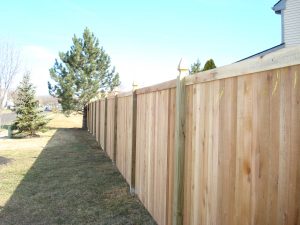
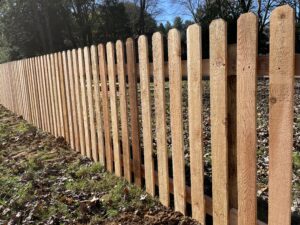

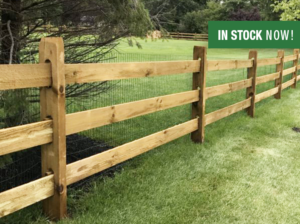
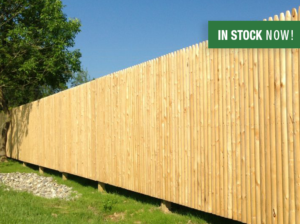
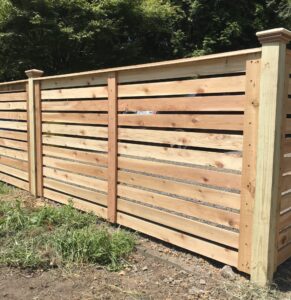

Recent Comments